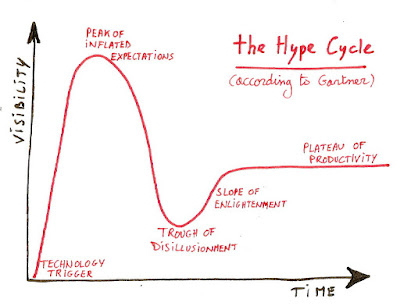Last Friday a collaboration between MIT and Harvard made the headlines with their research on quantum photonics, and I must say, the hype is particularly strong with this one. Here's my pick of the headlines from some of the popular science outlets:
"Photons entangled to make new form of light" -
New Atlas
"MIT Physicists Have Constructed a Bizarre Form of 'Molecular' Light With 3 Photons - photon's shouldn't do this" -
ScienceAlert
"Scientists create a new form of light in breakthrough that could pave the way for everything from ultra-fast quantum computers to real-life LIGHT SABERS" -
Daily Mail
I cannot overstate how badly overhyped this study is. First of all, the team did not find a new form of light, and no entanglement was involved. Neither did they make "molecular" light and photons are supposed to do exactly this. Oh, and you definitely cannot make light sabers with this technology (sorry).
The bit on quantum computers is partially true, but that's about it. So what was the research really about then?
Let me back up a little bit. The team made headlines (and hype) with similar research already in 2013, when they showed the same effect with two photons. This new study expanded on that by adding an extra photon into the mix.
The whole point of this technology is that under some very specific conditions, it is possible to tune how far apart the photons are from each other. In this particular study, a string of three separated photons go in, and they come out in a closely packed group. Basically, they tune photon statistics in a highly controlled manner, which presents a major advancement in quantum photonics.
This control is achieved by using a
Bose-Einstein condensate as a propagation medium for the photons. The condensate is pumped with a control laser, which couples the input photons to a specific
Rydberg state.
The authors point out that when the control laser and input photons hit atomic resonance, they produce a
Rydberg blockade. The blockade causes the photons to repel each other, which in turn caused the hype about light sabers.
As a side note, I don't think we'll ever see a Bose-Einstein condensate spewing out of a sword hilt, coupled with two high intensity lasers just so that some nerds like me could face off in a highly perilous and particularly clumsy sword fight.
In this newest study, the team works off resonance, causing the opposite effect where photons are attracted together. In this way the photons are bound within the condensate and the authors talk about dimers and trimers (bound states of two or three similar units).
However, they don't mention "molecules" anywhere. Yes the photons are bound, but only inside the condensate, and you shouldn't expect to get photon chemistry anytime soon. These are still the same old boring photons as before, and not some new form of light.
This effect was predicted long ago, so photons really should do this. If they didn't behave in the way theory suggests, then we could say that "photons shouldn't do this," so I really don't get that part of the hype.
But as I said before, this is still a major advancement and could prove very useful in the development of quantum computers and such. Still, this is just one piece of the quantum computer puzzle and we still need a lot of work to get where we want with them.
Lesson of the day: don't believe it if someone promises you light sabers on the internet, it's probably just hype.



Comments
Post a Comment